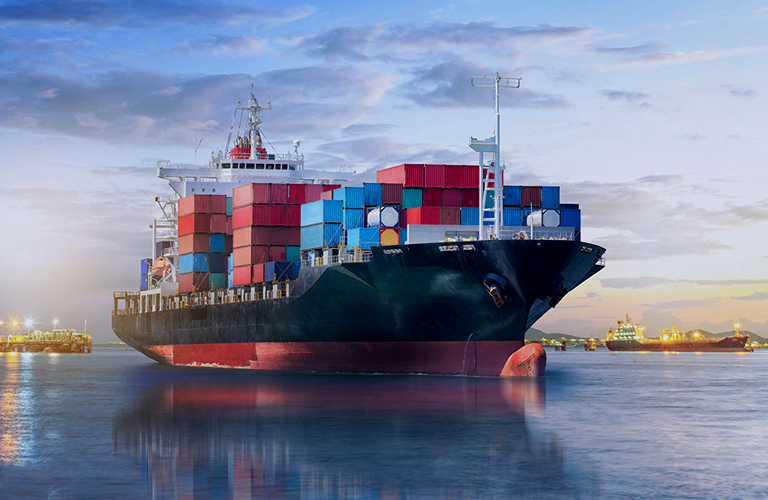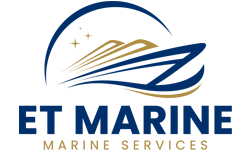ET Marine
PTW Process

Introduction
ET Marine Services
ET MARINE is well experienced in PTW Set –Up Process, Pre-Commissioning and Commissioning activities and can provide various services in the in-deep experience, guidance and qualified competent experience personnel necessary to deliver a unit safely commissioned , prepared for Ready to achieve a successful Start-up Process
The senior technicians and the engineers who make up our staff have been all chosen on the basis of the their professionalism, versatility and ability to adapt themselves to the different environment and industrial culture of our customers covering both “Home-Office” and “Site” phases providing specific services and specialist as well as the implementation of fully integrated projects even on a “Turn-Key” approach.
And the following steps what we covered under the PTW and Commissioning & Start up systems:-
PTW Process:
Permit to work system: What is it?
A permit to work system is a formal written procedure which has been designed to authorise and communicate to all potentially affected parties work that is planned to take place”. the purpose of this safe working practice is to ensure that isolation of hazardous energy and/or opening of equipment, machinery, vessels, piping and systems from sources of hazardous energy is performed in a safe and controlled manner
Issue permission to complete the job and list out which jobs to complete specify the work to be completed and the equipment to be used and list out the precautions to be taken when performing the job, a check list that all work has been completed and automatic notifications of works being completed or undertaken on sitemap out which task to complete in which ordermanage and control all safety considerations.
What is the outline of PTW System:-
- Ensuring employee protection against occupational risks, accidents, health hazards and dangerous situations.
- Avoid personnel injuries to employees and sub-contractors, and to protect property from potential damages.
- Integrating safety and health measures at every level – be it engineering design, operational activities, maintenance or construction.
- Mitigate Risk and hazard to ALARP level.
- Implementation of OISD (Oil Industry Safety Directorate) standards (designing and operations) at all division’s as per the Petroleum (Amendment) Rules, 2005.
- Providing adequate training on Health, Safety and Environmental responsibilities, ensuring high training standards and building overall awareness.
- Encouraging active employee participation for enhancing work conditions and environment management.
Our Services
What is the outline of PTW System
General
- Introduction
- What is a Permit to Work system?
- When are P.T.W. systems applicable?
- Responsibilities
- The Permit to Work Forms.
- LUN – Livening Up Notice
- Training and competence
- Documentation
- Verification and monitoring of the P.T.W system
- Assessment
Preparation
- Co-ordination
- Planning
- Hazard assessment Types/categories of work Interface tasks are clearly identified & cross referenced
- Life/validity of permits Isolation Requirements
- Precautions Gas testing Approve Signatories Process:-
- Display of permits
Revalidation
- Suspension
- Shift hand-overs
- Action in an emergency
- Monitoring
- Audits
Our own appendixes
- P.T.W. Forms & Certificates
- P.T.W. Application Process Flowchart:
- P.T.W SIMPOS.
Completion
- Return of permit
- Site inspection
- Cancellation of overrides Return to service
- Logs/records
Our Services
What is Commissioning & Start-Up Service
The standard definitions used are as follows
Pre-Commissioning
Pre-Commissioning activities start when the plant, or system, achieves Mechanical Completion. Frequently however, Pre-Commissioning activities overlap Mechanical Completion activities and for this reason the plant should be separated into easily manageable system package, each system package will be Pre-Commissioned as a whole and isolations at the boundaries Limits of the system package will be maintained until the completion of Pre-Commissioning activities. Pre-Commissioning activities include: checking for design conformity, checking the status of electrical, mechanical and instrument installations, running-in of equipment, flushing and cleaning activities, drying, etc.
Pre Commissioning is the execution of single discipline checks carried out on individual items of equipment by commissioning personnel, required to demonstrate unit or component functionality by introduction of energy, operation under loaded conditions, and prior to the dynamic operation and testing of the system in which the components reside. Presentation of information is in check sheet format
Tests shall
- Verify MC documentation is in place.
- Be carried out on a single discipline basis.
- Require individual equipment to be energized
- Validate the functioning of equipment
- Not require process fluids
- Record any outstanding Punch List items.
- Verify each Basic Function
Commissioning is the activities undertaken to ensure the dynamic verification of the functioning units or components and facilities forming a discrete operational system, sub system or commissioning package by demonstrating and recording its accordance with design parameters, regulations and specified operational requirements.
Operation may be simulated, prior to introduction of normal operating conditions. This activity is carried out and presented and recorded in accordance with individual detailed procedures developed specifically for the activity.
Typically dynamic commissioning activities undertaken after the completion of Commissioning Completion Records will:
- Be carried out on a System or Sub System containing more than one piece of equipment.
- Be carried out by a multi-disciplined team of Engineers.
- Be executed with the assistance of, or witnessed by, Operations personnel.
- Be executed as a series of steps set out in a procedure and signed off on completion of each step.
- Be executed using permanent utilities.
- Be executed using simulated conditions and confirmed when process fluids are available.
- Be Witnessed by Certifying authority where applicable
Typical work, which may be specified on the relevant Mechanical Completion Records will include, but not be limited to, the checks and verification of completion of the following:
- Fabrication, assembly and finishing of all structural steelwork.
- Installation of platforms, including stairways, safety grills, etc.
- Surface preparation, painting or galvanising of all steelwork, pipe work, equipment and facilities support steelwork.
- The making good of all damaged paint work.
- Installation of all equipment described in the contract and designated for installation together with its associated piping, electrics, instrumentation and other services.
- Fabrication, installation, connection and hydrostatic testing of all pipe work including flushing cleaning and drying activities.
- Installation of all cable support systems, cable glands, penetrations, junction boxes, outlets, light fittings and grounding.
- Installation, securing, terminating, marking, continuity and tightness checking, of all electrical, telecommunications and instrumentation cabling and wiring.
- Installation of all switchgear, transformers etc., power supply and control panels.
- Installation of HVAC ducting complete with all support steel, equipment, accessories, filters, instrumentation and controls. Carrying out an integrity test of the ducting and mechanical function tests of equipment.
- Checking free rotation and proper orientation of all rotating equipment.
- Installation of all, floor coverings, partitions, wall linings and associated insulation, furniture, fittings and service systems.
- Installation of all, instruments, instrument control panels, associated piping and cabling. Tightness testing of piping and continuity checking of cable.
- Installation of all, fire protection/detection and gas detection equipment and accessories including associated piping and wiring.
- Installation of, insulation and insulation fixing materials.
- Installation of safety equipment including platform safety and hazardous area signs. Installation and testing of lifting equipment
Commissioning
Commissioning is the phase in a project when design process fluids are introduced to the process. Note that for hydrocarbon systems the commissioning activities commence with inverting operations. Commissioning activities normally consist of activities associated with running or operating the plant and include operating adjustments necessary for satisfactory operation of the plant or part thereof. Also included are “Functional checks” which are methods used to prove that an item of mechanical equipment or control system functions correctly.
The Commissioning Process
The commissioning process is the overall process by which equipment and systems which have not been operated before are brought into operation.
The process begins prior to the commencement of Mechanical Completion whereby the Commissioning Team identify commissionable packages of Systems and Sub Systems. The boundary limits of Sub Systems will be identified on marked up P & I D’s, Electrical Single Line Drawings F&G, Telecom plans and Block Diagrams. Each Sub System is allocated a number and every item of equipment, piping, cables is referenced by a unique Sub Systems no.
Sub Systems will fall into commissioning sections where all equipment will be further broken down into individual Pre-Commissioning Completion Records (ITR-B) requirements. This information will be entered into the Completions Management System (CMS) database by ITR type no., discipline, System, Sub System and tag number.
The Completions Management System will provide the documentation for recording the interim stages of progress and outstanding work of Discipline, System, and Sub System completion from Mechanical Completion to Final Handover to Operations.
This definition provides a common database and tracking register for all Mechanical Completion and Pre-Commissioning and Commissioning activities.
Pre Commissioning Records (ITR Bs) will be issued in Discipline and Sub System packs by the Commissioning Team direct from the CMS database.
Flow of ITR B Check Sheets will be as per the ITR Check Sheet Flow Chart, ITRs are used to prove, validate and record the functioning of individual pieces of equipment during the Pre-Commissioning phase. A detailed step by step Commissioning Procedure will be produced by the Commissioning Team for each System which will contain all the information required to dynamically test the System in accordance with Vendor recommendations and design criteria. This procedure will also include an index of all ITRs for individual pieces of equipment within the System
Start-up
Start-up is the point in a project where process fluids and conditions are established with the intent of making products.
System
A section of the plant or facility that can be Pre-Commissioned and commissioned independently, but in parallel, with other sections of the plant or facility under construction.
Unit Ready for Commissioning
This is the point in a project where all utilities are commissioned and operational and the unit is ready to accept the introduction of hydrocarbons.
Unit Ready for Start-up
This is the point in a project where the unit is ready to establish process conditions with the intent of making product.
